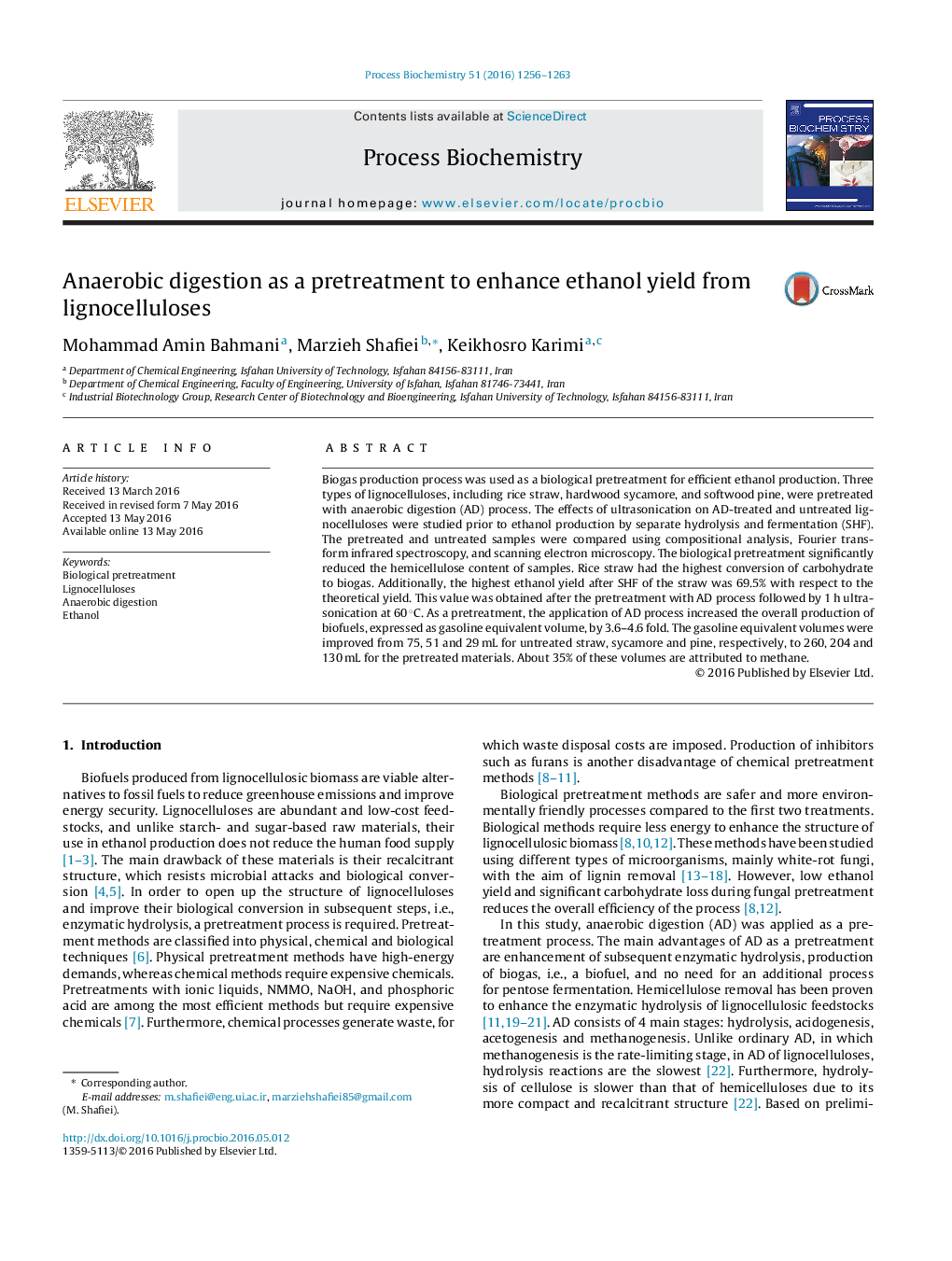| Article ID | Journal | Published Year | Pages | File Type |
|---|---|---|---|---|
| 4755231 | Process Biochemistry | 2016 | 8 Pages |
â¢Anaerobic digestion (AD) was a promising pretreatment method for lignocelluloses.â¢Ultrasonication after AD enhanced ethanol yield of AD treated lignocelluloses.â¢Increasing porosity and hemicellulose removal were the major pretreatment effects.â¢Maximum ethanol yield of 69.5%, was obtained from the pretreated rice straw.â¢Maximum total energy of 8.2 MJ kgâ1 can be generated from pretreated straw.
Biogas production process was used as a biological pretreatment for efficient ethanol production. Three types of lignocelluloses, including rice straw, hardwood sycamore, and softwood pine, were pretreated with anaerobic digestion (AD) process. The effects of ultrasonication on AD-treated and untreated lignocelluloses were studied prior to ethanol production by separate hydrolysis and fermentation (SHF). The pretreated and untreated samples were compared using compositional analysis, Fourier transform infrared spectroscopy, and scanning electron microscopy. The biological pretreatment significantly reduced the hemicellulose content of samples. Rice straw had the highest conversion of carbohydrate to biogas. Additionally, the highest ethanol yield after SHF of the straw was 69.5% with respect to the theoretical yield. This value was obtained after the pretreatment with AD process followed by 1 h ultrasonication at 60 °C. As a pretreatment, the application of AD process increased the overall production of biofuels, expressed as gasoline equivalent volume, by 3.6-4.6 fold. The gasoline equivalent volumes were improved from 75, 51 and 29 mL for untreated straw, sycamore and pine, respectively, to 260, 204 and 130 mL for the pretreated materials. About 35% of these volumes are attributed to methane.
Graphical abstractDownload high-res image (214KB)Download full-size image
